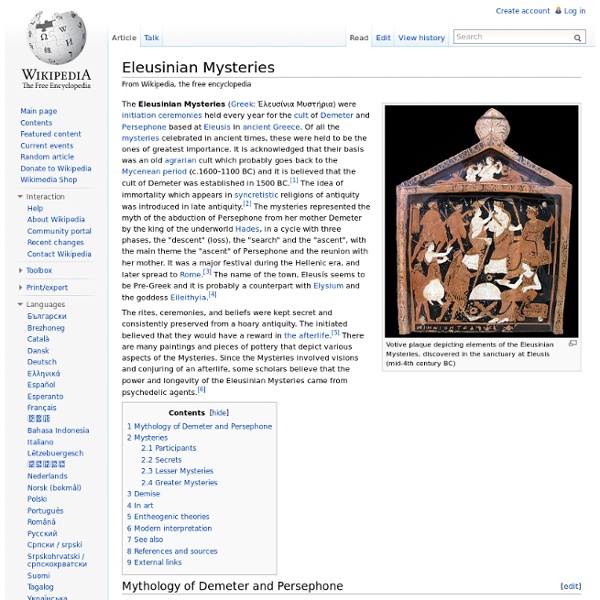30 Unsolved Mysteries that Fascinate Americans
Everybody loves a good mystery—and unsolved mysteries are all the more captivating. (After all, The Da Vinci Code didn’t make a bazillion dollars because people are really into the Mona Lisa!) With that in mind, here are just a few of the top unsolved mysteries in North America—ones that just may stay that way forever. Unless some sleuth finds that one missing piece to the puzzle that will reveal the truth. Who knows, maybe you’re that someone.
Wotan
German[edit] Etymology[edit] Ultimately from Proto-Germanic *Wōdanaz, cognate with English Woden, Old Frisian Weda, Old Norse Óðinn. Attested since the 12th century in the Chronicon of Godfrey of Viterbo, where it is spelled Wotan. In Old High German, the name could be spelled Wodan, Wotan, Wuotan or Woatan, depending on regional dialect. After Christianization, the name persisted in folklore and formed various derivations, such as Old High German Wuotunc, Wodunc, medieval Wüetung.
Çatalhöyük: Mysteries
Mysteries After examining the mysteries listen to Ian Hodder's, Çatalhöyük Project Director, thoughts on these questions.
Sigurd
The death of Siegfried. Hagen stands to the right of Siegfried with a bow. From the Hundeshagenscher Kodex. Sigurd (Old Norse: Sigurðr) or Siegfried (Middle High German: Sîvrit) is a legendary hero of Germanic mythology, who killed a dragon and was later murdered.
10 Creepy And Obscure Unsolved Mysteries
Mysteries stir our curiosity, mesmerizing us until they can be solved. Though supernatural causes or conspiracy theories are more fun to think about, mysteries often end up with surprisingly banal explanations. However, there are cases which remain unsolved, perhaps forever, and they are often the most intriguing. 10 The Murder Of Julia Wallace Julia Wallace was a British housewife who lived at 29 Wolverton Street in Liverpool.
Brunhild
Brunhild, also known as Brunhilda or Brynhild (Old Norse Brynhildr, Middle High German Brünhilt, Modern German Brünhild or Brünhilde) is a powerful female figure from Germanic heroic legend. She may have her origins in the Visigothic princess Brunhilda of Austrasia. In the Norse tradition, Brunhild is a shieldmaiden or valkyrie, who appears as a main character in the Völsunga saga and some Eddic poems treating the same events.
25 Greatest Unsolved Mysteries
There are many unsolved mysteries in life even though science, technology, and research have come a very long way. Although we may demand a logical explanations for these mysterious things, as of now we will have to settle with mere speculations. Until these mysteries are resolved, enjoy our 25 greatest unsolved mysteries ever. Which one is your favorite unsolved mystery? In the small town of Taos, New Mexico, there is a certain buzz often heard on the horizon that can be compared to the sound of a distant diesel engine.
Rigveda
First of the four sacred canonical texts (śruti) of Hinduism Rigveda (padapatha) manuscript in Devanagari, early 19th century. After a scribal benediction (śrīgaṇéśāyanamaḥ Au3m), the first line has the first pada, RV 1.1.1a (agniṃ iḷe puraḥ-hitaṃ yajñasya devaṃ ṛtvijaṃ). The pitch-accent is marked by underscores and vertical overscores in red. The Rigveda or Rig Veda (Sanskrit: ऋग्वेद ṛgveda, from ṛc "praise"[2] and veda "knowledge") is an ancient Indian collection of Vedic Sanskrit hymns. It is one of the four sacred canonical texts (śruti) of Hinduism known as the Vedas.[3][4]



